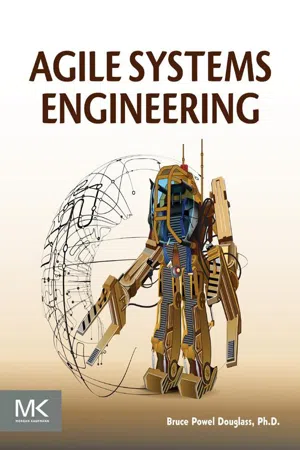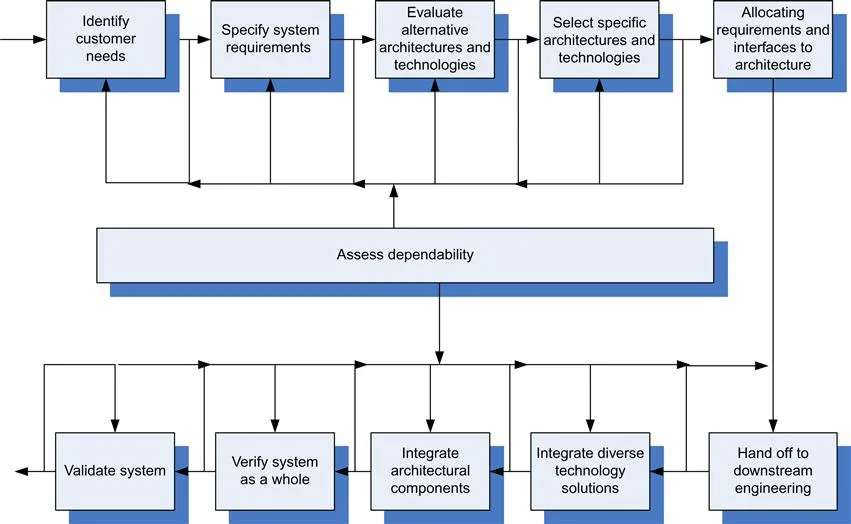
- 452 pages
- English
- ePUB (mobile friendly)
- Available on iOS & Android
Agile Systems Engineering
About This Book
Agile Systems Engineering presents a vision of systems engineering where precise specification of requirements, structure, and behavior meet larger concerns as such as safety, security, reliability, and performance in an agile engineering context.
World-renown author and speaker Dr. Bruce Powel Douglass incorporates agile methods and model-based systems engineering (MBSE) to define the properties of entire systems while avoiding errors that can occur when using traditional textual specifications. Dr. Douglass covers the lifecycle of systems development, including requirements, analysis, design, and the handoff to specific engineering disciplines. Throughout, Dr. Douglass couples agile methods with SysML and MBSE to arm system engineers with the conceptual and methodological tools they need to avoid specification defects and improve system quality while simultaneously reducing the effort and cost of systems engineering.
- Identifies how the concepts and techniques of agile methods can be effectively applied in systems engineering context
- Shows how to perform model-based functional analysis and tie these analyses back to system requirements and stakeholder needs, and forward to system architecture and interface definition
- Provides a means by which the quality and correctness of systems engineering data can be assured (before the entire system is built!)
- Explains agile system architectural specification and allocation of functionality to system components
- Details how to transition engineering specification data to downstream engineers with no loss of fidelity
- Includes detailed examples from across industries taken through their stages, including the "Waldo" industrial exoskeleton as a complex system
Frequently asked questions
Information
What Is Model-Based Systems Engineering?
Keywords
1.1 Key Systems Engineering Activities

1.1.1 Identifying Customer Needs
1.1.2 Specifying System Requirements
Table of contents
- Cover image
- Title page
- Table of Contents
- Copyright
- Dedication
- About the Author
- Preface
- Acknowledgments
- Chapter 1. What Is Model-Based Systems Engineering?
- Chapter 2. What Are Agile Methods and Why Should I Care?
- Chapter 3. SysML Introduction
- Chapter 4. Agile Stakeholder Requirements Engineering
- Chapter 5. Agile Systems Requirements Definition and Analysis
- Chapter 6. Agile Systems Architectural Analysis and Trade Studies
- Chapter 7. Agile Systems Architectural Design
- Chapter 8. The Handoff to Downstream Engineering
- Appendix A. T-Wrecks Stakeholder Requirements
- Appendix B. T-Wrecks System Requirements
- Index